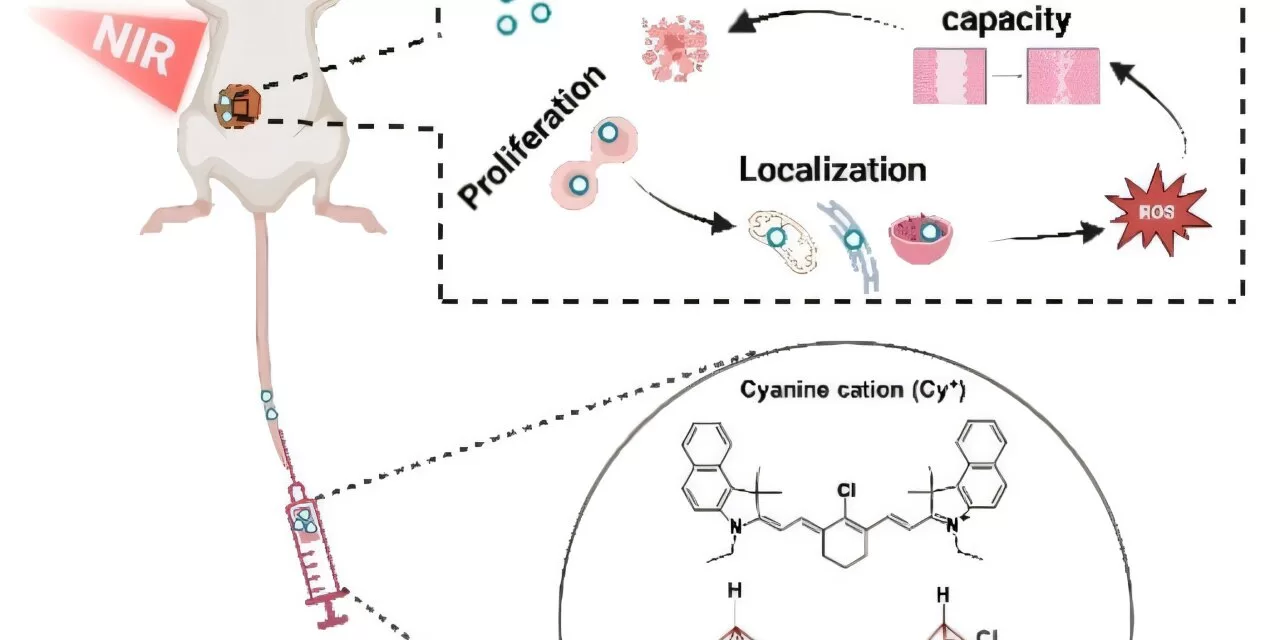In a groundbreaking development, scientists have created a new light-sensitive chemical that promises to revolutionize breast cancer treatment with minimal side effects. In recent mouse studies, the therapy successfully eradicated metastatic breast cancer tumors, offering hope for more effective and less harmful cancer treatments.
The study, published in Angewandte Chemie International Edition, details the development of cyanine-carborane salts—novel compounds that improve the precision and efficiency of photodynamic therapy (PDT). Researchers from the University of California, Riverside, and Michigan State University (MSU) spearheaded this innovation, aiming to overcome the limitations of traditional PDT.
How It Works
PDT has been used for decades to treat skin and bladder cancers by introducing light-sensitive chemicals into the body. These chemicals accumulate in cancer cells and, when exposed to light, produce reactive oxygen molecules that destroy malignant tissue while leaving healthy cells unharmed. However, traditional PDT has drawbacks, such as prolonged light sensitivity, limited tissue penetration, and off-target toxicity.
Cyanine-carborane salts offer a promising alternative. According to Professor Sophia Lunt, an MSU cancer researcher and co-principal investigator, these salts address major PDT challenges, providing a more effective and targeted cancer treatment. Unlike current FDA-approved PDT chemicals that linger in the body for months, requiring patients to avoid light exposure, cyanine-carborane salts are quickly expelled, remaining only in the cancer cells requiring treatment.
Targeted and Deep Tissue Treatment
Vincent Lavallo, a chemistry professor at UCR and co-principal investigator, emphasized the precision of these compounds. “The most interesting thing is the targeting ability of this substance. It goes right where it’s needed and stays there while the rest passes through. That way, you’ll only kill the cells right where the cancer is but not harm the patient,” he explained.
The salts leverage a natural vulnerability in cancer cells by being absorbed through overexpressed proteins called OATPs, eliminating the need for additional chemicals to enhance targeting. Additionally, unlike conventional PDT, which works with shallow-penetrating light wavelengths, cyanine-carborane salts can be activated by near-infrared light, allowing them to reach deeper tumors.
Future Prospects
Encouraged by their success, researchers plan to explore broader applications of cyanine-carborane salts in cancer therapy. Beyond light-based activation, scientists are investigating whether these compounds could be adapted for treatments using other energy sources that penetrate even deeper into the body.
“Our work offers a targeted, safe, and cost-effective treatment for aggressive breast cancers with limited treatment options,” said Amir Roshanzadeh, the study’s first author and an MSU cell and molecular biology graduate student. “It also opens the door to breakthroughs in other approaches for cancer therapy and targeted drug delivery.”
Reference
Roshanzadeh, A. et al. Next-Generation Photosensitizers: Cyanine-Carborane Salts for Superior Photodynamic Therapy of Metastatic Cancer, Angewandte Chemie International Edition (2025). DOI: 10.1002/anie.202419759
Disclaimer: This article summarizes recent scientific findings and is for informational purposes only. It is not intended as medical advice. Patients should consult with healthcare professionals for personalized treatment options.











